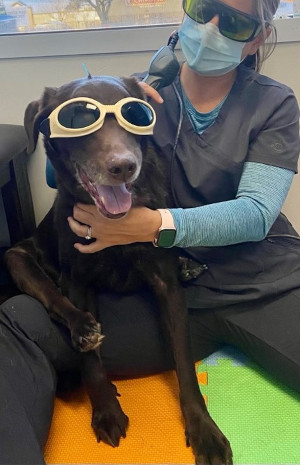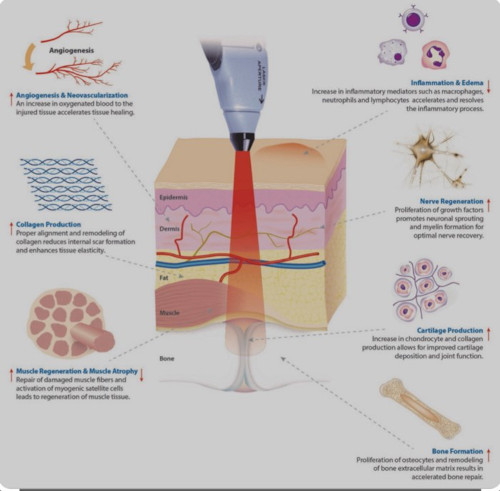Physical Rehabilitation Therapy/Cold Laser Therapy
How can your pet benefit from rehabilitation therapy?
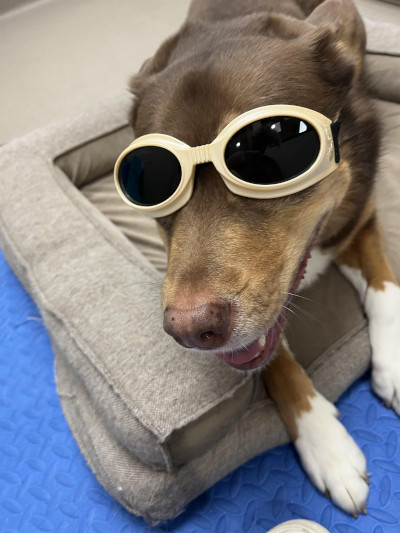
Ease discomfort and enable mobility
- Senior dogs and cats
- Degenerative joint disease (osteoarthritis)
- Hip, knee, tarsus, shoulder, elbow, carpus, spine
- Neurologic conditions
- GOLPP (geriatric onset laryngeal paralysis and polyneuropathy)
- FCE (fibrocartilaginous embolism)
- IVDD (Intervertebral Disk Diseases)
Support postoperative recovery
- Cruciate ligament surgery
- Patellar luxation surgery
- IVDD (Intervertebral Disk Diseases)
Promote healing after non-surgical injury or immobilization
- Muscle, tendon and ligament injuries
- Splinting/casting
How can rehabilitation therapy improve your pet’s quality of life?
- Reduce pain
- Reduce inflammation
- Increase range of motion
- Increase flexibility
- Strengthen and maintain muscle mass
- Improve balance and coordination
- Improve mental wellbeing
- Safe for pets with metabolic diseases such as liver or kidney disease
MANUAL THERAPY & MASSAGE
Manual therapy is a practice that is used to both assess and treat soft tissue abnormalities, joint dysfunction and pain. Specific techniques such as joint mobilizations, traction, glides and stretching are effective in addressing these Pathologies.
Therapeutic Modalities
We check the most common muscle groups for pain and tension depending on your pet’s condition, allowing for a whole-body approach to therapy. Oftentimes even though a pet has a painful joint due to arthritis, they also have compensatory pain in other muscle groups. For example, dogs experiencing hip pain from osteoarthritis, will shift their weight forward, putting extra stress on the shoulders, forelimbs and upper back. These compensatory areas require attention and treatment to facilitate healing.
Massage aids in circulation of fluids throughout the body. This mechanical stimulation assists the joints and muscles in flushing toxins from the tissues by promoting lymphatic movement/drainage, and secondly by increasing blood flow to the site to bring in healing nutrients. Massage can also lower blood pressure by promoting comfort and relaxation.
We utilize massage techniques such as: effleurage, petrissage, tapotement, cross friction, ischemic compression and myofascial trigger point release of painful areas.
The results of massage and manual therapy include reduced pain and stiffness, more flexibility and greater range of motion. Massage and stretching can be performed during the rehab session and we can also instruct you about how you can help your pet at home to stay comfortable between sessions.
ACUPUNCTURE
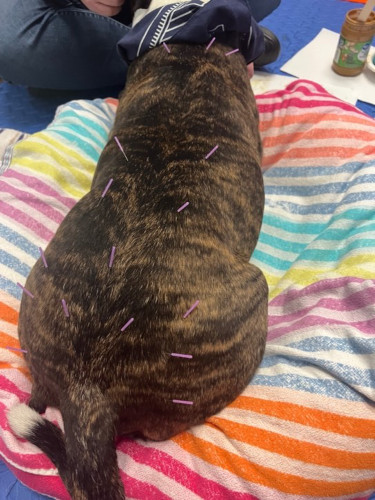
Acupuncture is the insertion of thin needles into strategic points on the body to elicit a physiological response. Each acupuncture point has specific biochemical actions when stimulated. This can stimulate nerves, increase blood circulation, relieve muscle spasm and initiate the release of endorphins (the body’s natural pain control chemical). Acupuncture has long been recognized as an effective treatment for chronic pain.
The overwhelming majority of pets do not mind having these very small needles placed, but if they do, not to worry! We can still get a beneficial response using our LASER therapy at those acupuncture points.
Acupuncture if very safe for pets if performed by a licensed veterinarian with training in needle placement. Side effects of acupuncture are rare. An animal may be sleepy for 24 hours after the treatment. These effects are an indication that some physiological changes are developing, and they are most often followed by an improvement in the pet’s condition. After a couple of sessions, most pets walk into their treatment area and lie down for relaxation, remembering the previous feel good experiences.
NEUROMUSCULAR ELECTRICAL STIMULATION (NMES)
TRANSCUTANEOUS ELECTRICAL NERVE STIMULATION (TENS)
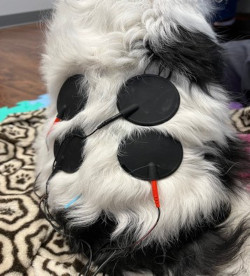
Electrical stimulation (E-stim) is the application of electrical impulses to a muscle or muscle group stimulating their contraction. NMES produces a tetanic contraction and is used to prevent atrophy of muscles. TENS produces a smaller amplitude muscle fasciculation and aids in pain management by helping to reduce swelling and edema, and also by stimulating nerve cells that block the transmission of pain signals. Pets recovering from orthopedic surgery, spinal cord injury and other neurologic and orthopedic issues can benefit from E-stim.
PULSED ELECTROMAGNETIC FIELD (PEMF)
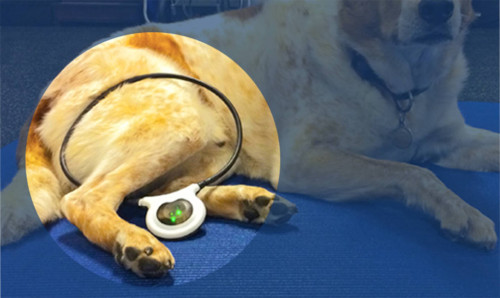
Cells have electric fields which enable them to carry out their functions, and a magnetic field is created when these electrical currents flow. When cells become damaged, this field may become disrupted altering normal cellular processes by changing the cell membrane potential and ion transport systems. The application of PEMF therapy can restore cellular imbalance thereby improving tissue and bone healing, and decreasing pain and inflammation. PEMF therapy was originally approved by the FDA in the 1970s for bone healing of non-union fractures.
Common PEMF therapy devices in veterinary medicine include a bed in which the pet lies on to receive treatment or a loop placed around the area in need of treatment. This cannot be felt by the pet. PEMF is also known to have a calming Effect.
THERAPEUTIC EXERCISE
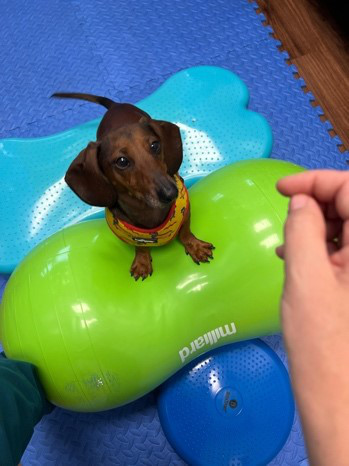
Therapeutic exercise is utilized to strengthen the muscles needed to maintain or improve body function. It promotes balance and awareness of foot placement (proprioception). Therapeutic exercise benefits geriatric pets, postoperative pets as well as performance or athletic pets. Body weight exercises (calisthenics) can be used to train the muscles. In addition, common therapeutic equipment such as cavaletti poles, balance discs and peanut balls can be utilized to strengthen muscles and improve balance and neurologic function. We can teach you how to perform exercises at home tailed to your pet’s needs. These exercises are based on setting short term and long term goals. Including routine evaluations in rehab sessions are key for reassessing and subsequent progression of exercises.
Cold Laser Therapy
This therapy utilizes specific wavelengths of light to stimulate cellular metabolism. It is now becoming more commonly described/referred to as photobiomodulation (PBM). As we ready know, light stimulates photosynthesis in plants enabling their growth. In the same vein, light stimulates molecules in skin, eventually leading to the production of Vitamin D. LASER therapy stimulates cells to increase metabolism thereby releasing molecules that aid in increased cell division, increased collagen deposition and increased circulation promoting healing effects. Therapeutic LASER also has analgesic effects by blocking pain transmitted by certain nociceptive nerve cells (decreases nerve cell conduction velocity), and secondly by increasing endorphins (the body’s natural pain control chemical). Therapeutic LASER can be beneficial for pain relief in conditions such as arthritis, muscle spasms, promoting tissue healing, reducing swelling and edema as well as stimulating acupuncture points. Both pets (and their people) wear safety goggles during therapy sessions to protect the eyes.
